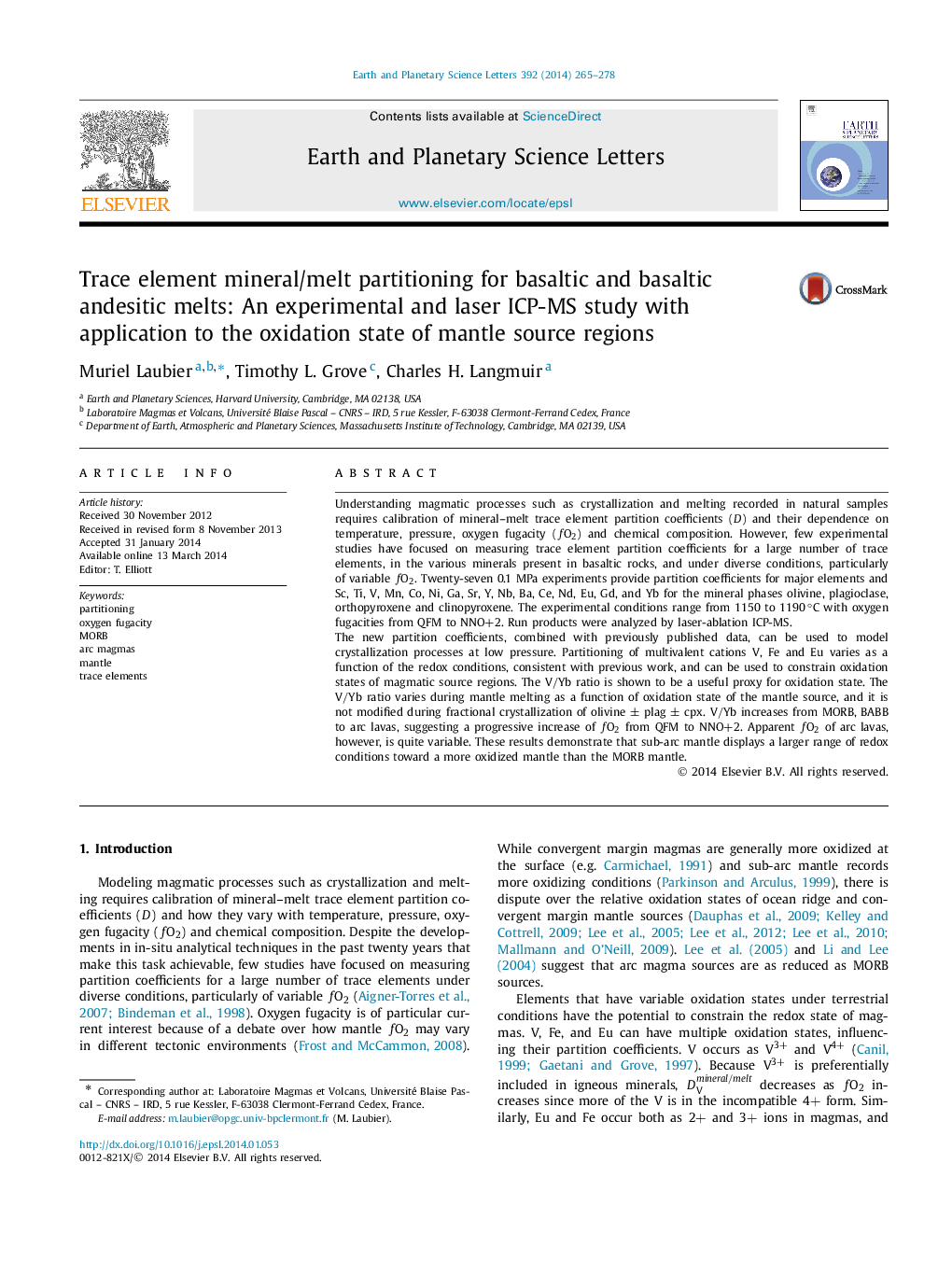| Article ID | Journal | Published Year | Pages | File Type |
|---|---|---|---|---|
| 6429517 | Earth and Planetary Science Letters | 2014 | 14 Pages |
â¢Comprehensive trace element partitioning dataset on twenty-seven 0.1 MPa experiments.â¢Partitioning data can be used in the modeling of crystallization processes at low pressure.â¢V/Yb ratio as a proxy for redox state.â¢V/Yb increases from MORBs, BABBs to arc lavas.â¢Sub-arc mantle is more oxidized than MORB mantle.
Understanding magmatic processes such as crystallization and melting recorded in natural samples requires calibration of mineral-melt trace element partition coefficients (D) and their dependence on temperature, pressure, oxygen fugacity (fO2) and chemical composition. However, few experimental studies have focused on measuring trace element partition coefficients for a large number of trace elements, in the various minerals present in basaltic rocks, and under diverse conditions, particularly of variable fO2. Twenty-seven 0.1 MPa experiments provide partition coefficients for major elements and Sc, Ti, V, Mn, Co, Ni, Ga, Sr, Y, Nb, Ba, Ce, Nd, Eu, Gd, and Yb for the mineral phases olivine, plagioclase, orthopyroxene and clinopyroxene. The experimental conditions range from 1150 to 1190â°C with oxygen fugacities from QFM to NNO+2. Run products were analyzed by laser-ablation ICP-MS.The new partition coefficients, combined with previously published data, can be used to model crystallization processes at low pressure. Partitioning of multivalent cations V, Fe and Eu varies as a function of the redox conditions, consistent with previous work, and can be used to constrain oxidation states of magmatic source regions. The V/Yb ratio is shown to be a useful proxy for oxidation state. The V/Yb ratio varies during mantle melting as a function of oxidation state of the mantle source, and it is not modified during fractional crystallization of olivine ± plag ± cpx. V/Yb increases from MORB, BABB to arc lavas, suggesting a progressive increase of fO2 from QFM to NNO+2. Apparent fO2 of arc lavas, however, is quite variable. These results demonstrate that sub-arc mantle displays a larger range of redox conditions toward a more oxidized mantle than the MORB mantle.
